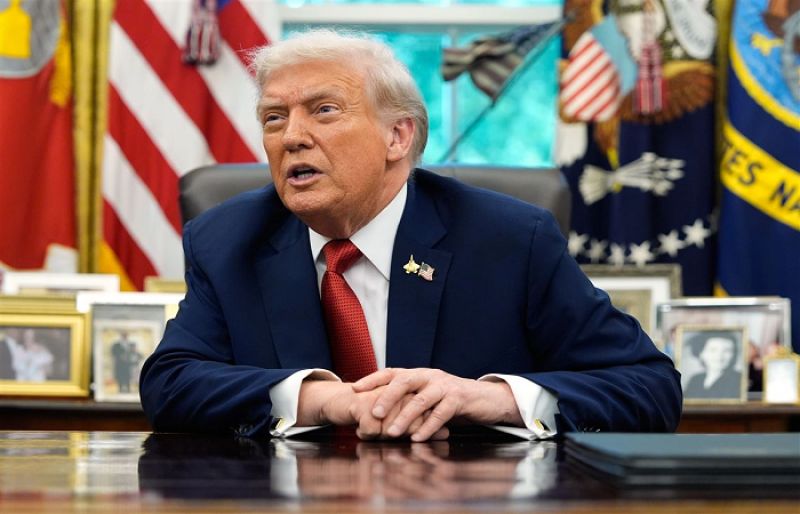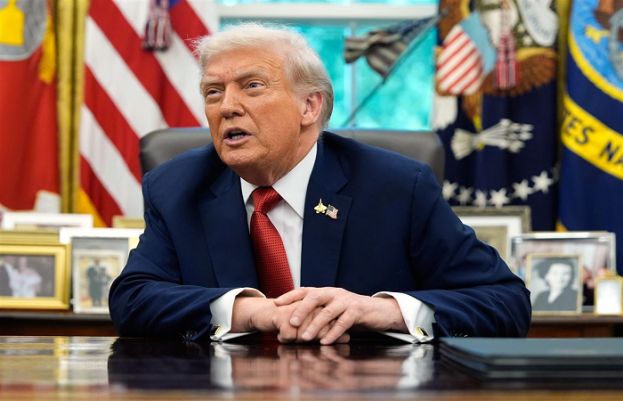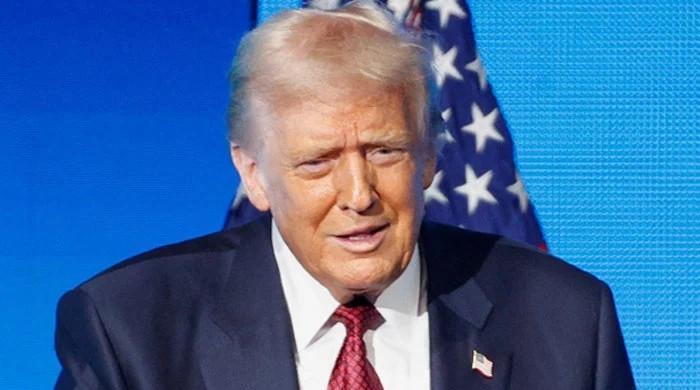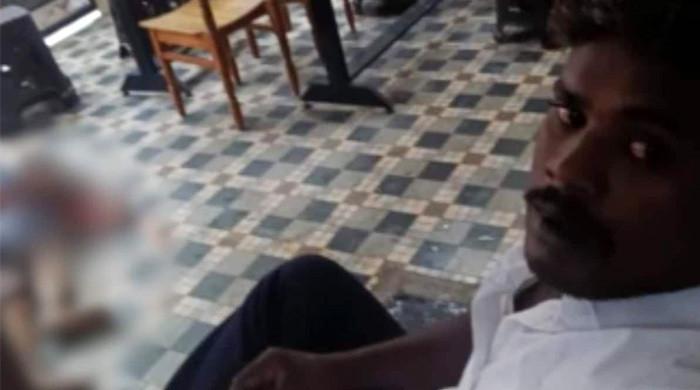Politics
Trump escalates pressure on Democrats amid US government shutdown


Donald Trump signaled Thursday that he intends to proceed with mass layoffs of US federal workers, escalating pressure on Democrats to support measures aimed at ending the ongoing government shutdown.
The Republican president announced he would meet with budget chief Russell Vought “to determine which of the numerous Democrat-led agencies most of which he called a political scam should face cuts, and whether those reductions would be temporary or permanent.”
Trump shared the announcement on his Truth Social platform as the government entered its second day of a shutdown, expected to affect 750,000 federal employees, who would be sent home without pay across multiple agencies.
Vought informed House Republicans on Wednesday that many workers could face permanent layoffs in the coming days, echoing Trump spokeswoman Karoline Leavitt, who said the firings were “imminent” and could number “in the thousands.”
Trump framed these cuts as a strategy to increase pressure on Democrats, stating, “we can take actions during the shutdown that are irreversible, that are damaging to them and cannot be undone by them.”
However, Senate Democratic Minority Leader Chuck Schumer and House counterpart Hakeem Jeffries dismissed the threat of mass firings as political intimidation, asserting that such moves would likely not hold up in court.
While two Senate Democrats and an independent aligned with the party broke from their colleagues, the majority continue to oppose a House-passed resolution to fund the government at current levels through November 21.
“This is day two of Donald Trump’s shutdown, but it’s day 256 of the chaos his presidency has inflicted on the American people,” Jeffries told reporters at the US Capitol on Thursday.
He accused Republicans of shutting down the federal government because “they do not want to provide healthcare for working-class Americans,” while emphasizing that Democrats are willing to negotiate “anytime, anywhere”, including with Trump and Vice President JD Vance, to find a resolution.
Weekend votes?
The Senate is not voting on Thursday because of the Jewish Yom Kippur holiday, but another vote is expected on Friday and on most days until the standoff is resolved.
With Democrats expected to block the Republican reopening plan again, Republicans were reportedly mulling whether to send their senators home after the vote — effectively guaranteeing the shutdown drags into next week.
But House Speaker Mike Johnson, whose members have been off all week, told reporters Senate leaders need to stick to an initial plan to work through the weekend in Washington.
“And the House is coming back next week, hoping that they will be sending us something to work on, that we can get back to work and do the people’s business,” he told a news conference at the Capitol.
For now, Democrats are dug in on their demands for extending health care subsidies before they will agree to a funding deal.
Five additional Democratic votes would be needed to reach the 60-vote threshold in the 100-member Senate to green-light the House-passed bill.
As each side seeks to point the finger at the other over the shutdown, polling indicates that Democrats and Republicans may currently be sharing the blame.
A new poll from the Washington Post found that 47 percent of Americans blame Trump and congressional Republicans for the shutdown, while just 30 percent point the finger at Democrats.
But a New York Times/Siena survey showed two-thirds of respondents said Democrats should not shut down the government if Republicans do not agree to their demands.
Adding to pressure on Democrats to relent and provide votes to reopen the government, Treasury Secretary Scott Bessent told CNBC Thursday that the shutdown could hurt US economic growth.
“This isn’t the way to have a discussion, shutting down the government and lowering the GDP,” he said.
Politics
White House says Trump MRI was preventative, president in excellent health


WASHINGTON: The White House has said that President Donald Trump is in good health, even as people continue to question how his age may affect his performance as the country’s most powerful man.
White House press secretary Karoline Leavitt said on Monday that a recent MRI conducted on President Trump was preventative in nature and revealed that he was in good cardiovascular health.
Speaking to reporters at a press briefing at the White House, Leavitt said men of Trump’s age benefited from such screenings.
‘President Trump’s cardiovascular imaging was perfectly normal, no evidence of arterial narrowing, impairing blood flow or abnormalities in the heart or major vessels,’ Leavitt said of the 79-year-old president.
‘The heart chambers are normal in size. The vessel walls appear smooth and healthy, and there are no signs of inflammation or clotting. Overall, his cardiovascular system shows excellent health. His abdominal imaging is also perfectly normal,’ Leavitt said.
Trump underwent a magnetic resonance imaging scan during a recent medical evaluation, but did not disclose the purpose of the procedure, which is not typical for standard check-ups. The lack of details raised questions about whether full information regarding the president’s health is being released in a timely fashion by the White House.
Trump is sensitive about his age and well-being. He personally attacked a female New York Times reporter on social media last week over a story she co-wrote examining the ways that Trump’s age may be affecting his energy levels.
Politics
Tajikistan says five Chinese nationals killed in cross-border attacks from Afghanistan in past week


- China advises companies, personnel to evacuate border area.
- Embassy says Chinese citizens targeted in armed attack on Sunday.
- Another border attack on Friday killed three citizens: embassy.
Five Chinese nationals have been killed and five more injured in Tajikistan in attacks launched from neighbouring Afghanistan over the past week, Tajik authorities and China’s embassy in the Central Asian country said on Monday.
China’s embassy in Dushanbe, the capital, advised Chinese companies and personnel to urgently evacuate the border area.
It said that Chinese citizens had been targeted in an armed attack close to the Afghan border on Sunday. On Friday, it said that another border attack — which Tajik authorities said had involved drones dropping grenades — had killed three Chinese citizens.
Tajikistan, a mountainous former Soviet republic of around 11 million people with a secular government, has tense relations with the Taliban authorities in Afghanistan. It has previously warned of drug smugglers and illicit gold miners working along the remote frontier.
China, which also has a remote, mountainous border with Tajikistan, is a major investor in the country.
There was no immediate response on Monday from the authorities in Afghanistan to the Tajik statement.
But Afghanistan’s foreign ministry last week blamed an unnamed group, which it said was out to create instability, and said it would cooperate with Tajik authorities.
Tajik President Emomali Rahmon’s press service said on Monday that Rahmon had met with the heads of his security agencies to discuss how to strengthen border security.
It said that Rahmon “strongly condemned the illegal and provocative actions of Afghan citizens and ordered that effective measures be taken to resolve the problem and prevent a recurrence of such incidents.”
Tajikistan endured a brutal civil war in the 1990s after independence from Moscow, during which Rahmon initially rose to power. The country is closely aligned with Russia, which maintains a military base there.
Millions of Tajiks, a Persian-speaking nation, live across the border in Afghanistan, with Tajikistan historically having backed Afghan Tajiks opposed to the Taliban.
Politics
Indian man kills wife, takes selfie with dead body


A man in India’s south brutally killed his estranged wife at a women’s hostel and took a selfie with her dead body, according to NDTV.
The victim, identified as Sripriya, employed at a private firm in Coimbatore, Tamil Nadu, had separated from her husband, Balamurugam, who was from Tirunelveli.
Police said the suspect arrived at the hostel on Sunday afternoon, concealing a sickle in his clothes, and was seeking to meet her.
They had an argument soon after the couple met, and the feud turned into a violent attack by Balamurugan, who drew the sickle and hacked the woman to death.
Furthermore, the police said he then took a selfie with her body and shared it on his WhatsApp status, accusing her of “betrayal”.
The incident spread panic and chaos in the hostel.
Following the brutal murder, the suspect did not escape from the spot but waited until the police arrived, and he was arrested at the crime scene. The murder weapon was recovered.
The initial investigation suggested that he suspected his wife of being in a relationship with another man.
-

 Sports1 week ago
Sports1 week agoWATCH: Ronaldo scores spectacular bicycle kick
-

 Entertainment1 week ago
Entertainment1 week agoWelcome to Derry’ episode 5 delivers shocking twist
-

 Politics1 week ago
Politics1 week agoWashington and Kyiv Stress Any Peace Deal Must Fully Respect Ukraine’s Sovereignty
-

 Business1 week ago
Business1 week agoKey economic data and trends that will shape Rachel Reeves’ Budget
-

 Tech6 days ago
Tech6 days agoWake Up—the Best Black Friday Mattress Sales Are Here
-

 Politics1 week ago
Politics1 week ago53,000 Sikhs vote in Ottawa Khalistan Referendum amid Carney-Modi trade talks scrutiny
-

 Fashion1 week ago
Fashion1 week agoCanada’s Lululemon unveils team Canada kit for Milano Cortina 2026
-

 Tech1 day ago
Tech1 day agoGet Your Steps In From Your Home Office With This Walking Pad—On Sale This Week





